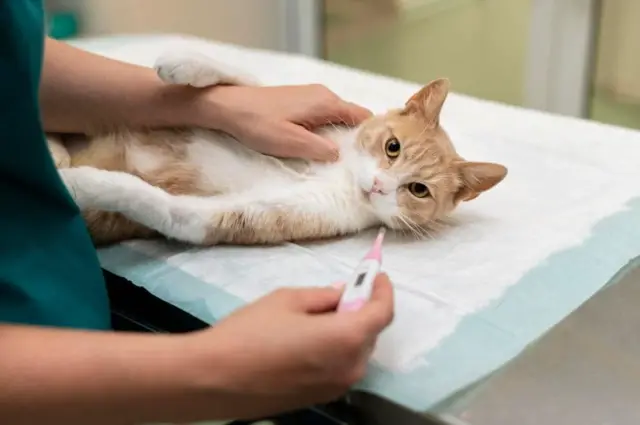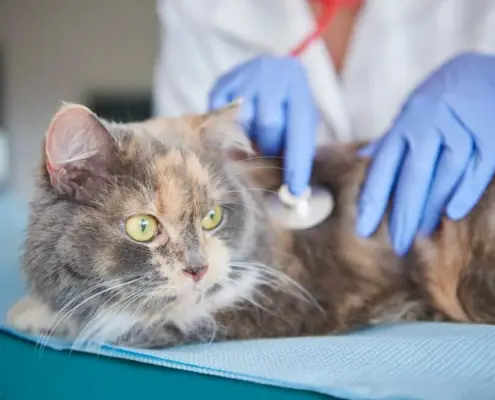
Staph infection, or staphylococcal infection, is a common bacterial infection that can affect cats. It is caused by the bacteria Staphylococcus, which can be found on the skin and in the environment. While staph bacteria are normally present on the skin of healthy cats, they can cause an infection when the skin is damaged or the immune system is compromised. Recognizing and treating staph infection in cats is important to prevent the infection from spreading and causing further complications.
What causes staph infection in cats?
There are several factors that can contribute to the development of staph infection in cats. One of the main causes is a weakened immune system, which can occur due to stress, illness, or certain medications. Cats with skin allergies or other skin conditions are also more susceptible to staph infection. Additionally, injuries or wounds that break the skin can provide an entry point for staph bacteria to invade and cause an infection.
Symptoms of staph infection in cats
Staph infection in cats can manifest in a variety of ways, depending on the severity and location of the infection. Common symptoms include redness, swelling, and warmth around the affected area. The skin may appear flaky, scaly, or crusty, and there may be small bumps or pustules present. Cats with staph infection may experience itching or discomfort, leading to excessive scratching or licking of the affected area. In severe cases, the infection can spread and cause abscesses or cellulitis.
Diagnosing staph infection in cats
If you suspect that your cat may have a staph infection, it is important to consult a veterinarian for an accurate diagnosis. The veterinarian will perform a thorough physical examination of your cat and may collect a sample from the affected area for laboratory testing. This can help determine the presence of staph bacteria and guide appropriate treatment. In some cases, additional tests such as skin scrapings or cultures may be necessary to rule out other skin conditions or identify the specific strain of staph bacteria involved.
Treatment options for staph infection in cats
The treatment of staph infection in cats typically involves a combination of medical interventions and supportive care. Your veterinarian may prescribe antibiotics to target the staph bacteria and help clear the infection. It is important to follow the prescribed dosage and duration of antibiotic treatment to ensure effective results. In addition to antibiotics, your veterinarian may recommend topical treatments such as medicated shampoos or ointments to soothe the skin and promote healing.
Home remedies for staph infection in cats
While professional veterinary care is essential for treating staph infection in cats, there are some home remedies that can complement the medical treatment. Keeping your cat’s skin clean and dry is crucial to prevent the infection from worsening. You can gently clean the affected area with a mild antiseptic solution recommended by your veterinarian. Additionally, providing a balanced diet and ensuring your cat’s overall health and well-being can help boost their immune system and aid in the recovery process.
Preventing staph infection in cats
Preventing staph infection in cats involves maintaining good hygiene and minimizing risk factors. Regularly grooming your cat and checking for any signs of skin irritation or injury can help detect and address potential problems early on. Avoid using harsh chemicals or irritants on your cat’s skin, as this can disrupt the natural balance and make them more susceptible to infections. Providing a clean and stress-free environment for your cat can also contribute to their overall health and reduce the risk of staph infection.
When to see a veterinarian for staph infection in cats
If you notice any symptoms of staph infection in your cat, it is important to seek veterinary attention promptly. The veterinarian will be able to provide an accurate diagnosis and develop an appropriate treatment plan. Additionally, if the infection does not improve with treatment or if your cat’s condition worsens, it is crucial to consult your veterinarian for further evaluation. Early intervention and proper medical care can prevent complications and promote a faster recovery.
Staph infection in cats vs other skin conditions
It is important to differentiate staph infection from other skin conditions that can cause similar symptoms in cats. Conditions such as allergies, fungal infections, or other bacterial infections can present with similar signs. A proper diagnosis by a veterinarian is crucial to determine the underlying cause of the symptoms and provide appropriate treatment. Misdiagnosis or self-medication can lead to ineffective treatment and potential complications.
Conclusion
Staph infection in cats can be a challenging condition to deal with, but with early recognition and proper treatment, it can be effectively managed. Understanding the causes, symptoms, and treatment options for staph infection in cats is important for cat owners to ensure the health and well-being of their feline companions. If you suspect that your cat may have a staph infection, it is crucial to consult a veterinarian for an accurate diagnosis and personalized treatment plan. By providing the necessary care and attention, you can help your cat recover and prevent the recurrence of staph infection.
If you suspect that your cat may have a staph infection, don’t hesitate to consult a veterinarian for an accurate diagnosis and appropriate treatment. Your cat’s health and well-being are worth the investment in professional care.
If you enjoyed my article, I would appreciate you sharing it with your network.

Sima Ndlebe
Sima writes for CatBuzz. He is interested in Cats, Health and Fitness, and Entrepreneurship.
Published: 11 October 2023
Related Articles
Disclaimer
The content found on CatBuzz.org is presented on an "as is" basis and is intended for general consumer information and education purposes only. Any utilization of this information is voluntary and solely at the user's own risk.
None of the articles or content should be regarded as, or used in place of, veterinary medical advice, diagnosis, or treatment. The information provided on the website is purely for educational and informational intentions and should not be considered a substitute for professional guidance from a veterinarian or other qualified expert. The articles are designed to inform consumers about veterinary healthcare and medical matters that may impact their cat's daily life. It should be noted that this website and its services do not constitute the practice of any form of veterinary medical advice, diagnosis, or treatment. CatBuzz.org explicitly disclaims any liability for any direct or indirect damages or losses that may arise from the use of or reliance on the information contained within the content.
Consumers must consult a veterinarian, veterinary specialist, or another qualified veterinary healthcare provider when seeking advice regarding their cat's health or medical conditions. It is important not to ignore, avoid, or postpone seeking medical advice from a veterinarian or other qualified veterinary healthcare provider solely based on information obtained from this website. If you believe that your cat may be experiencing a medical issue or condition, it is imperative to promptly contact a qualified veterinary healthcare professional.



